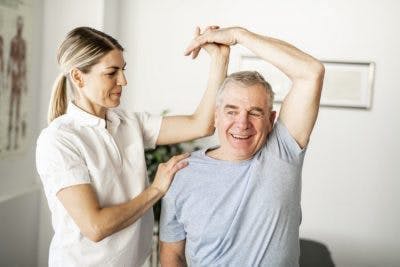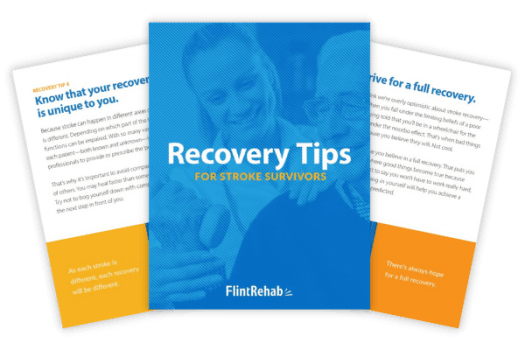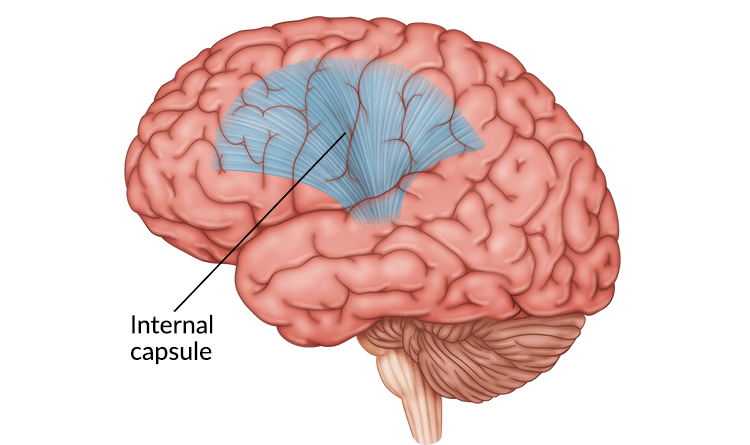Understanding Internal Capsule Stroke: Symptoms & Recovery Process
An internal capsule stroke affects the tiny blood vessels deep within the brain. Because many crucial fibers pass through the internal capsule, even a small stroke in this area can result in a significant loss of motor control, sensation, or cognition. Fortunately, there are effective ways to recover functions affected by internal capsule stroke and improve your quality of life.
Anatomy of the Internal Capsule
The internal capsules are V-shaped structures located deep in the brain. Many motor, sensory, and cognitive fibers run through the internal capsules as they travel between the cerebral cortex (the outer layer of the brain) and the brainstem (the lower area that connects to the spinal cord).
Both hemispheres of the brain have an internal capsule. As a result, damage to the left internal capsule generally affects the right side of your body while damage to the right internal capsule affects the left side of your body. Motor control and/or sensation can be affected.
Different fibers run through each region of the internal capsule, each controlling different functions. Therefore, the effects of an internal capsule stroke depend on which areas were affected.
The following section will discuss potential effects of an internal capsule stroke and how damage in specific areas can affect functional outcomes.
Secondary Effects of Internal Capsule Stroke
A stroke occurs when an artery in the brain gets blocked (ischemic stroke) or bursts (hemorrhagic stroke). The arteries in the internal capsule are very small, which increases the likelihood of clotting that can lead to a stroke.
Blood is rich in oxygen and other essential nutrients that fuel brain activity. When blood supply is cut off, brain cells start to die, which can affect various sensory, motor, and cognitive functions. Unfortunately, brain cells that have died are unable to repair themselves or regenerate. However, through the brain’s ability to utilize neuroplasticity, functions affected by an internal capsule stroke may be recovered.
Secondary effects that may occur after an internal capsule stroke include:
1. Pure Motor Hemiplegia

When the posterior limb of the internal capsule is affected by stroke, it generally affects movement and coordination. In fact, the most common effect of internal capsule strokes is pure motor hemiplegia.
Pure motor hemiplegia results in strictly movement-related effects on one side of the body. In internal capsule strokes, pure motor hemiplegia is generally proportionate, meaning that it affects the face, arms, and legs at equal severities.
2. Facial Weakness
The muscles of the face and neck are controlled by an area of the internal capsule called the genu. Damage to this area can affect functions like speaking, chewing, and swallowing. As a result, individuals may struggle to swallow (dysphagia), have difficulty with eating, and/or struggle with speech (dysarthria and other motor speech disorders) after an internal capsule stroke.
3. Cognitive Impairments
The anterior limb of the internal capsule contributes to various cognitive functions. As a result, a stroke in the arteries that supply the anterior limb may lead to:
- Confusion
- Memory disorder
- Impaired attention
- Anxiety
- Agitation
- Speech disorders, such as apraxia of speech
As a result, internal capsule stroke survivors with anterior limb damage will likely experience cognitive fatigue (mental exhaustion) because the brain has to work harder to concentrate. This can result in behavioral changes like increased agitation or confusion.
4. Sensory Loss
Somatosensory fibers run through both the genu and posterior limb of the internal capsule. Therefore, damage to either one of these areas after stroke can result in loss of sensation in the opposite side of the body. Sensory impairments are often reported in the form of heaviness, numbness, or loss of tactile sensation. Similar to pure motor hemiplegia, loss of sensation occurs in the face, arm, and leg equally.
5. Hearing Impairments
Your hearing is partly controlled by an area of the internal capsule called the sublenticular segment. This area of the brain transmits auditory signals from the thalamus to the auditory cortex. When an internal capsule stroke affects this area, the survivor may sustain hearing impairments.
6. Visual Impairments
Your vision is partly controlled by an area of the internal capsule called the retrolenticular segment. When this area of the brain is affected by stroke, the survivor may experience visual impairments such as hemianopia (losing half your visual field) and quadrantanopia (losing a quarter of your visual field).
Now that you understand the potential effects of an internal capsule stroke, the next section will discuss how to promote recovery.
Recovery After Internal Capsule Stroke

Every internal capsule stroke is unique and requires a personalized approach to rehabilitation that targets each individual’s specific deficits. Participating in rehabilitation therapies can help stroke survivors identify which functions need to be developed and learn effective exercises or activities that can help improve them.
Rehabilitation therapies that may help individuals recover from internal capsule stroke include:
- Physical Therapy. Survivors who experience difficulties with movement after stroke will benefit from working with a physical therapist. Physical therapy helps individuals improve motor functions through targeted exercise.
- Speech Therapy. If your stroke results in facial weakness, speech therapy can help. A speech-language pathologist will guide you through exercises designed to strengthen the oral motor muscles so you can chew, swallow, and speak more effectively.
- Occupational Therapy. The effects of an internal capsule stroke may contribute to difficulties engaging in everyday tasks such as dressing, bathing, and toileting. If this is the case, occupational therapy can help you learn new ways to perform these activities to regain some of your independence.
- Sensory Reeducation. To restore sensation, stroke survivors should work on sensory reeducation exercises with an occupational therapist. They are designed to encourage the brain to relearn sensory processing skills for properties like texture and temperature.
- Vision Training. If you’re experiencing visual field cuts after stroke, consider vision training. It involves stimulating your vision with different exercises based upon your unique needs.
The most effective way to recover after an internal capsule stroke is to promote neuroplasticity. Neuroplasticity is the brain’s ability to rewire its neural circuitry, which allows functions affected by stroke to be reorganized and improved.
Consistently practicing the exercises learned in rehabilitative therapies will reinforce demand for those functions and encourage adaptive changes to occur. The more you practice, the stronger these new connections become. Consider asking your therapist for a home exercise program to continue stimulating your brain to make adaptive changes, even outside of your rehabilitation sessions.
Understanding Internal Capsule Stroke: Key Points
Because the blood vessels in the internal capsule are so small, they are susceptible to clotting, which can cause a stroke. Depending on the severity and specific location of the internal capsule stroke, various motor, sensory, and cognitive functions may be affected.
By stimulating the brain and promoting neuroplasticity through highly repetitive and task-specific practice, any function affected by stroke has the potential to be improved.
We hope this article helped you understand what to expect after an internal capsule stroke and how to optimize your recovery outcomes.
Keep It Going: Download Our Stroke Recovery Ebook for Free

Get our free stroke recovery ebook by signing up below! It contains 15 tips every stroke survivor and caregiver must know. You’ll also receive our weekly Monday newsletter that contains 5 articles on stroke recovery. We will never sell your email address, and we never spam. That we promise.
